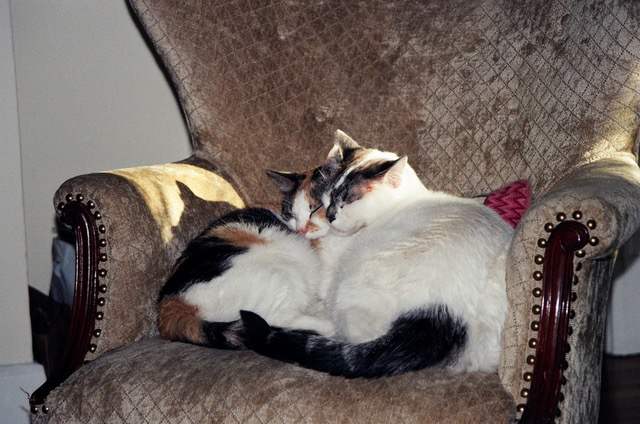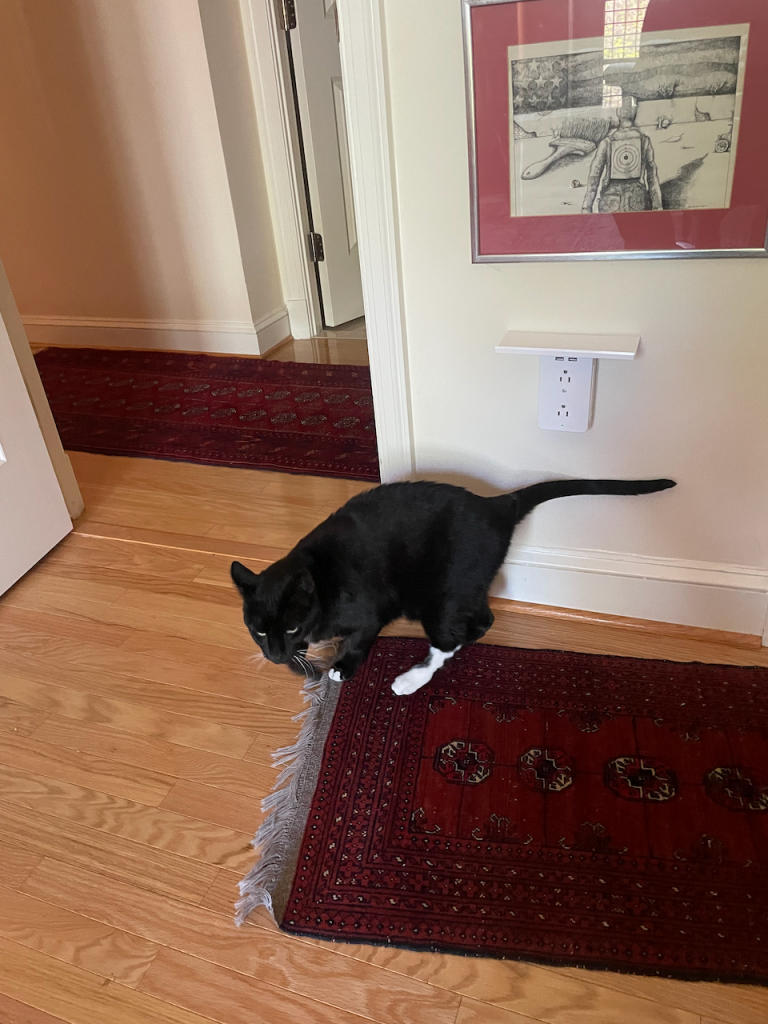This spring marks the 50th anniversary of Hard Living on Clay Street, a book I wrote that was first published in 1973 and has been in continuous print since then. Here is the story of how that happened and how the book has made a difference in my life.
In the spring of 1970, I was finishing my masters degree at the School of City and Regional Planning at the University of North Carolina in Chapel Hill. Stu Chapin, a revered professor there, had just received a large grant from the National Institute of Mental Health to study white working class, low income neighborhoods. The study was mainly quantitative, but they needed someone on the ground to keep the survey research honest and to function as a participant observer. When Professor Chapin offered me the job, I accepted in a heartbeat. Embry and I moved to Mount Rainier, Maryland, the site of the study, with our infant son, Andrew, in tow, in late August 1970.
Mt Rainer along with several surrounding working class communities was chosen because at the time its neighborhoods were the poorest in the mid-Atlantic region. We rented an apartment in an old house on “Clay Street” (not its real name) and hung out on front porches, got to know our neighbors, attended community meetings, and joined a bowling league and a fishing club (just me). I dictated my observations almost every day using an old, clunky tape recorder and sent them back to Chapel Hill for transcribing. It was a once in a lifetime experience.
I had no idea that a book would ever come out of this effort, nor was I expected to do much more than write a chapter or two for the book the qualitative researchers planned to publish. At the end of the study period of one year, we said goodbye to the friends we had made on Clay Street and returned to Chapel Hill where my job was to review the transcripts and contribute to the survey research findings as appropriate. You can imagine that the people we got to know were puzzled at first as to what a young family was doing just hanging out all day and talking to people. While my job felt a little like spying, I promised myself never to lie to my “subjects” about why I was there. When people got up the courage to ask me, my spiel went something like this:
“Well, I am on a research project to help the federal government understand how ordinary people live. The officials in Washington often don’t have a clue, so my job is to keep them from doing dumb things by reporting back to them what life is like on the ground in neighborhoods like this.”
“Hold on,” would often come the reply from a person, usually with raised eyebrows and a puzzled look. “You mean to tell me that the federal government is paying you—probably a good salary, right—to just live here and get to know ordinary people so the government won’t screw things up?”
I would nod yes with a sheepish grin. Then usually the question would be repeated two or three more times, each time with a wider grin and a puzzled look of disbelief, to which I would nod yes.
“God damn,” would often come the response. “Ain’t that just like the federal government!”
While I had no intention of writing a book, in November I realized that I might be on to something. I was sick for a week in the middle of that month and was not able to do my job of dictating observations. I got a call from the woman in Chapel Hill who was transcribing my observations, who wanted to know why I had missed several days of dictating and when she would get the next installment. She confessed that a group of over a half dozen people would gather at her apartment every Sunday evening to listen to my observations while they consumed beer and pizza.
When we returned to Chapel Hill, Embry enrolled in the School of Public Health to get her masters in biostatistics, and I hunkered down to try to make sense of 2,500 pages of single spaced transcripts. It took me the better part of a year, but by the spring when I was close to finishing, Professor Chapin encouraged me to send the manuscript to four publishers—McGraw Hill, Wiley, Little Brown, and the long shot, Doubleday. My transcriber typed up the manuscript and made mimeographed copies. Rejections came within a couple of weeks from McGraw Hill and Wiley but no word from either Little Brown or Doubleday. A few weeks after the rejection by the first two, I got a call from the editor-in-chief of Little Brown, leaving a message that it was important for me to call him back, which I did with my heart pounding. They were by far my best hope because they had recently published a very successful book called Tally’s Corner, which was a similar participant-observation study, this one about African American, street corner men in a Washington low income neighborhood. I called him back immediately.
“Mr. Howell,” he began “Just so you don’t get your hopes up, we are not going to publish your book. We have high standards at Little Brown about what we publish, which your manuscript does not meet. There was a brief pause before he continued,” But while I have you on the line, could you tell me how the main characters of the book are doing? Start first with Bobby Jean.”
I spent the next thirty minutes telling him how the two main families, the Shacklefords and the Mosebys, were managing to get by. He listened attentively, asked a few follow up questions, and then asked if I would mind calling him back if I had more stories to tell about these families. I remember hanging up the phone and concluding that this was probably the most bizarre phone call I had ever had.
“Well,” I concluded, “That was it.” I figured I probably would not even get the courtesy of a response from Doubleday, by far the highest profile of the four. Good try, I thought, just not in the cards. Finding a publisher was not going to happen. By this time, I had moved on anyway, landing a job in Washington working for a planning and real estate development consulting firm, and was headed in a very different direction from urban anthropology.
Two days later a thin envelope appeared in our mailbox from Doubleday Books. My first response was to throw it in the wastebasket without opening it. I had already suffered enough humiliation as it was, and I knew what was in the letter– “thanks but no thanks.” Embry encouraged me to open it anyway since there was nothing to lose. I reluctantly opened the letter, which read, “Dear Mr. Howell, we have read your manuscript, “Hard Living on Clay Street,” and we will publish it. A representative from Doubleday will call you in a few days.” The letter was signed by Loretta Barrett, editor-in-chief, Doubleday Books.
I do not recall if I let out a shout of joy or not, but in terms of significant moments in one’s life, this is up there at or near the top. The book came so close to never seeing the light of day. I certainly would not have pursued the quest any farther. As I have said many times, life is a matter of inches–and often luck– and as many would agree, mysterious. I recall the great quote from the book by Amor Towles, A Gentleman From Moscow, that “a coincidence is God’s way of remaining anonymous.”
Did the book’s publication change my life? Yes, but in subtle ways. For a brief two or three year period I was a minor celebrity with dozens of interviews (mainly radio and lectures at colleges, but I did get interviewed on the CBS Morning News). The book got scores of (generally positive) reviews, many from major publications like the New York Times and the Washington Post. While I was encouraged to use the book to help me get into a PhD program as a steppingstone to pursuing an academic career, this was not what I wanted to do. I did not want to be an observer but to be in the middle of the action where I could have a more immediate impact and had my eye on affordable housing and community revitalization. I was ready to move on.
There was another reason that I was reluctant to take on another similar assignment or go the academic route. I could not help feeling that there was an aspect of exploitation in this kind of work: Academic researcher and a person of privilege goes to poor neighborhood and lives there observing poor people, writes book about it, gets famous (brief and short lived in my case), goes back home to nice neighborhood and good job. His subjects remain poor, struggling from day to day to survive. No thank you. While I tried to ameliorate this dilemma somewhat by sharing a portion the royalties with the two main families during the first 10 years (who fondly accused me of not marketing the book aggressively enough), this was not sufficient justice, not for me anyway. I felt there was something wrong with this picture.
However, as hard as writing can be, from this experience I did get hooked. I went on to write two more books and to ghost write a third. The publishing world now is very different from what it was in the early 1970s and much harder to get the attention of a publisher. My last book, Civil Rights Journey, had a deal with a publisher which fell through at the last minute, so I opted for self-publishing with Authorhouse in 2012. I also started serious blogging that year and have been at it ever since, as indeed you must know if you are reading this. I have now posted well over 500 blogs, averaging about one a week.
I have also managed to keep a toe in the water in the academic world despite not pursuing a career in teaching and research. In 1981 I took a year of absence from my job in an affordable housing development company to become the first Banneker Professor of Washington Studies at George Washington University (a position I got because of the book) for the spring semester 1981 and later became an Adjunct Professor in the GW Honor’s College where I taught a course on affordable housing and urban development to undergraduates. For years I was a lecturer in affordable housing finance at the University of Maryland School of Public Policy.
So while the book did not change my life from a career perspective, it did change it by giving me –and also Embry– the opportunity to know people from very different backgrounds and gain appreciation for them and the challenges they faced. My hope was then–and still is–that the book would promote understanding and empathy.
That Hard Living on Clay Street has been read by so many over a 50-year period is something I could never have anticipated in my wildest dreams. In 1971 before I had sent the manuscript off to the four publishers, I sent a copy to my favorite English professor at Davidson where I attended college and asked him to let me know what he thought. He called me several weeks later with only one comment, “How does it feel to have written a book that people will still be reading fifty years from now?” I dismissed his comment as wishful thinking. To me that this actually happened seems like a miracle. I certainly rank it as one of the things in my career that I am most proud of and grateful for.
(That my daughter’s family ended up moving to the old Clay Street neighborhood in the early 2000s is another story to be told at another time. How that white, working class neighborhood– which if it had not changed, today would be avid Trump and MAGA country–evolved to become a mix of intellectuals, artists, musicians, and writers and how it is now racially diverse and won the award for the most gay friendly community in Maryland is the story of how our cities and communities have evolved over the last 50 years. Stay tuned.)




